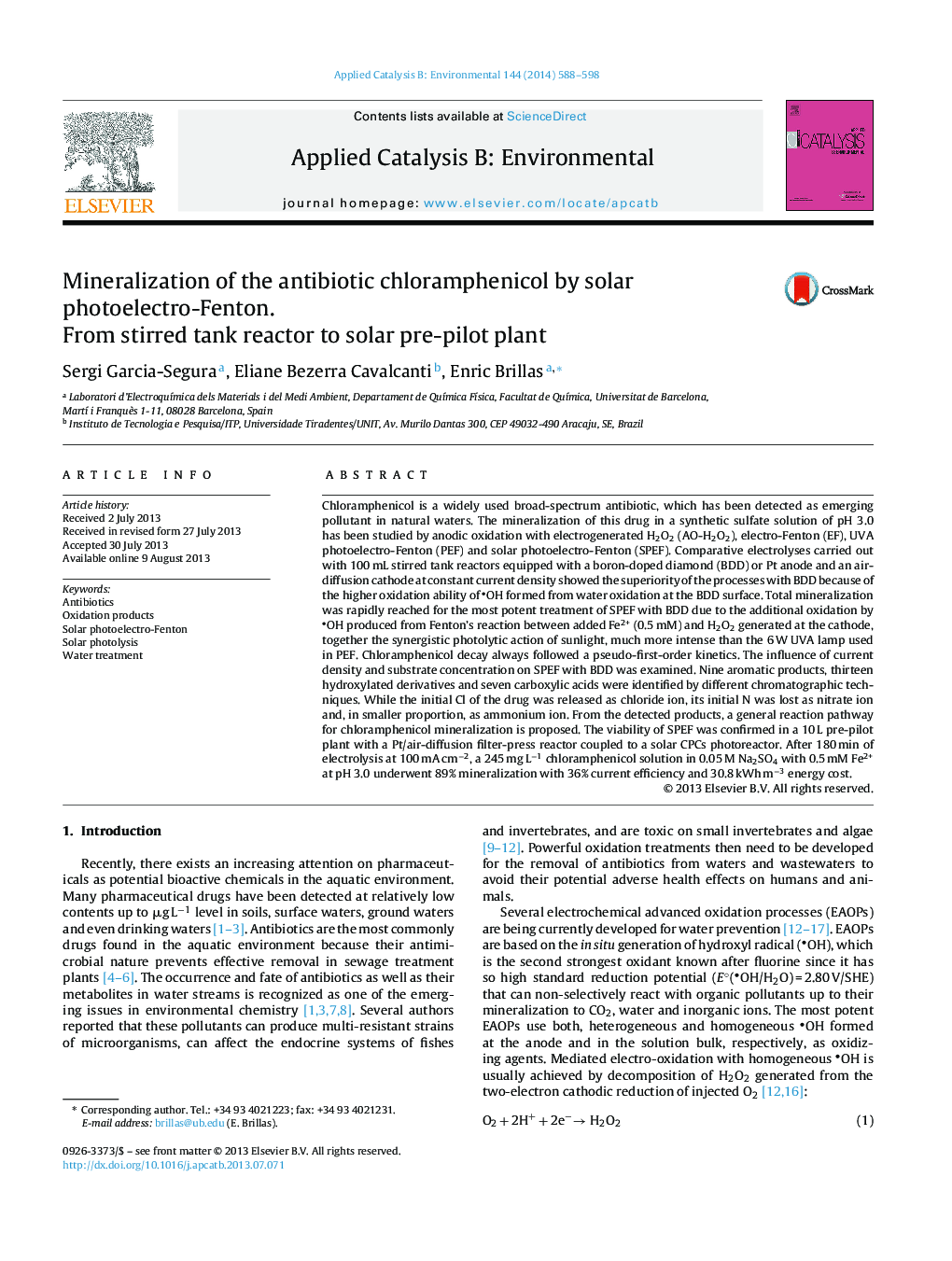| کد مقاله | کد نشریه | سال انتشار | مقاله انگلیسی | نسخه تمام متن |
|---|---|---|---|---|
| 45397 | 46410 | 2014 | 11 صفحه PDF | دانلود رایگان |

• Total mineralization of chloramphenicol by solar photoelectro-Fenton in a stirred tank reactor.
• Quicker mineralization achieved with BDD than with Pt.
• Detection of nine aromatic products, thirteen hydroxylated derivatives and seven carboxylic acids.
• Release of chloride and nitrate ions and, in smaller proportion, of ammonium ion.
• The process was viable in a solar pre-pilot plant with a Pt/air-diffusion cell coupled with a CPCs photoreactor.
Chloramphenicol is a widely used broad-spectrum antibiotic, which has been detected as emerging pollutant in natural waters. The mineralization of this drug in a synthetic sulfate solution of pH 3.0 has been studied by anodic oxidation with electrogenerated H2O2 (AO-H2O2), electro-Fenton (EF), UVA photoelectro-Fenton (PEF) and solar photoelectro-Fenton (SPEF). Comparative electrolyses carried out with 100 mL stirred tank reactors equipped with a boron-doped diamond (BDD) or Pt anode and an air-diffusion cathode at constant current density showed the superiority of the processes with BDD because of the higher oxidation ability of
• OH formed from water oxidation at the BDD surface. Total mineralization was rapidly reached for the most potent treatment of SPEF with BDD due to the additional oxidation by
• OH produced from Fenton's reaction between added Fe2+ (0.5 mM) and H2O2 generated at the cathode, together the synergistic photolytic action of sunlight, much more intense than the 6 W UVA lamp used in PEF. Chloramphenicol decay always followed a pseudo-first-order kinetics. The influence of current density and substrate concentration on SPEF with BDD was examined. Nine aromatic products, thirteen hydroxylated derivatives and seven carboxylic acids were identified by different chromatographic techniques. While the initial Cl of the drug was released as chloride ion, its initial N was lost as nitrate ion and, in smaller proportion, as ammonium ion. From the detected products, a general reaction pathway for chloramphenicol mineralization is proposed. The viability of SPEF was confirmed in a 10 L pre-pilot plant with a Pt/air-diffusion filter-press reactor coupled to a solar CPCs photoreactor. After 180 min of electrolysis at 100 mA cm−2, a 245 mg L−1 chloramphenicol solution in 0.05 M Na2SO4 with 0.5 mM Fe2+ at pH 3.0 underwent 89% mineralization with 36% current efficiency and 30.8 kWh m−3 energy cost.
Figure optionsDownload as PowerPoint slide
Journal: Applied Catalysis B: Environmental - Volume 144, January 2014, Pages 588–598